This post may contain affiliate links. Please read our disclosure policy.
How to make rose water at home with a couple of quick and simple steps. The distilled rose water can be used in recipes, as a beautiful product, a scented room mist, or even as a gift!
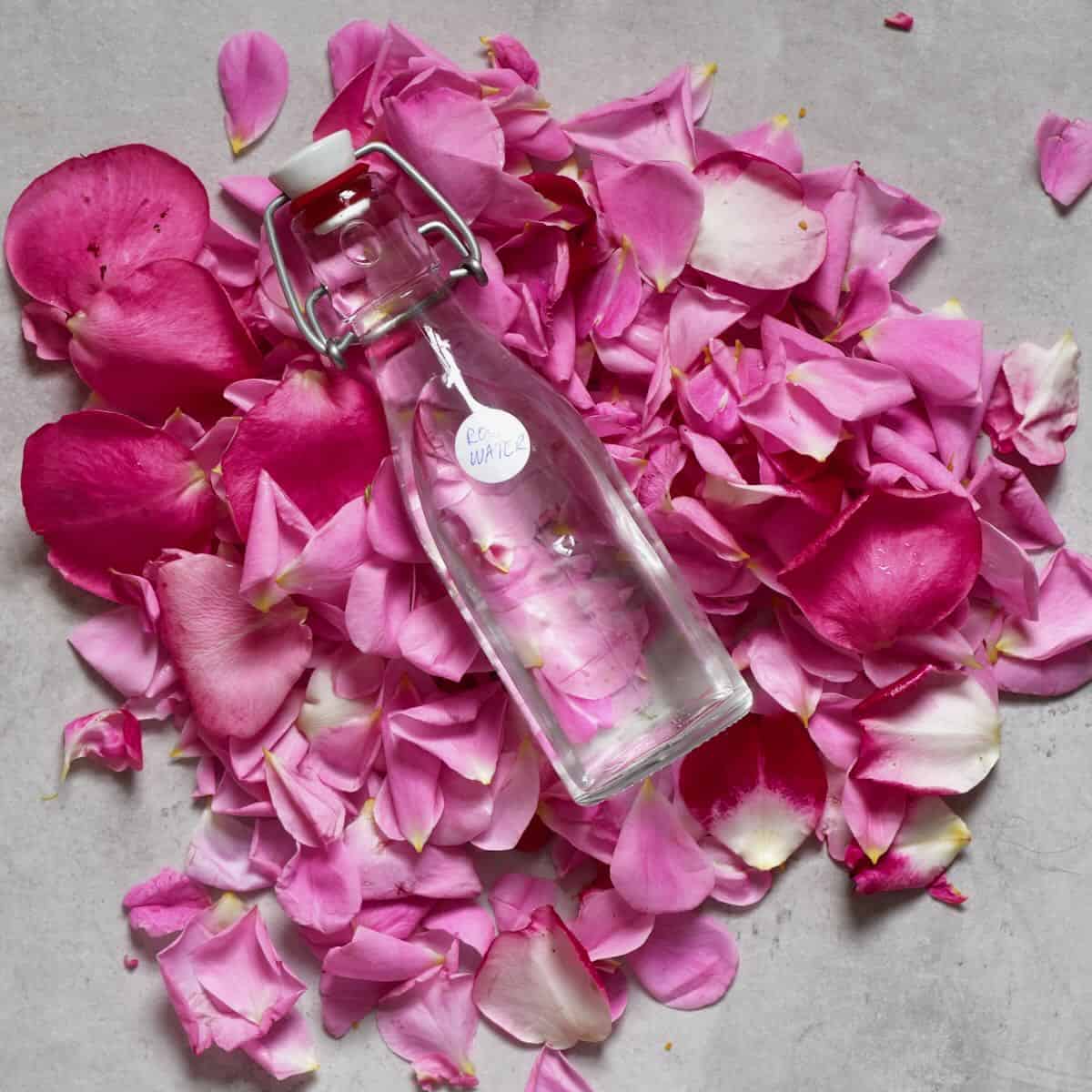
I love all sorts of DIY projects and this homemade rose water is one of my favorites. I find its lovely smell so relaxing, that I can spray it around me all day long. Plus, it can also be used for cooking and in cosmetics so I just had to learn how to make DIY rose water.
Want to save this recipe?
Why make rose water at home
If you too enjoy the smell of roses, you’ll love how simple the method of making rose water is and how fragrant it is. Plus, the resulting distilled water is completely chemical-free and is made using just water and organic rose petals. This means that you can use it both as an all-natural beauty product and in the kitchen.
However, to make it safe for consumption rose water needs to be made by distillation – this is the process of evaporating the water and then condensing it back to liquid. Then the distilled rosewater will have all of its impurities removed while keeping the floral aroma and taste of the roses. As this rosewater recipe is very simple, you can then quickly enjoy all of its benefits.
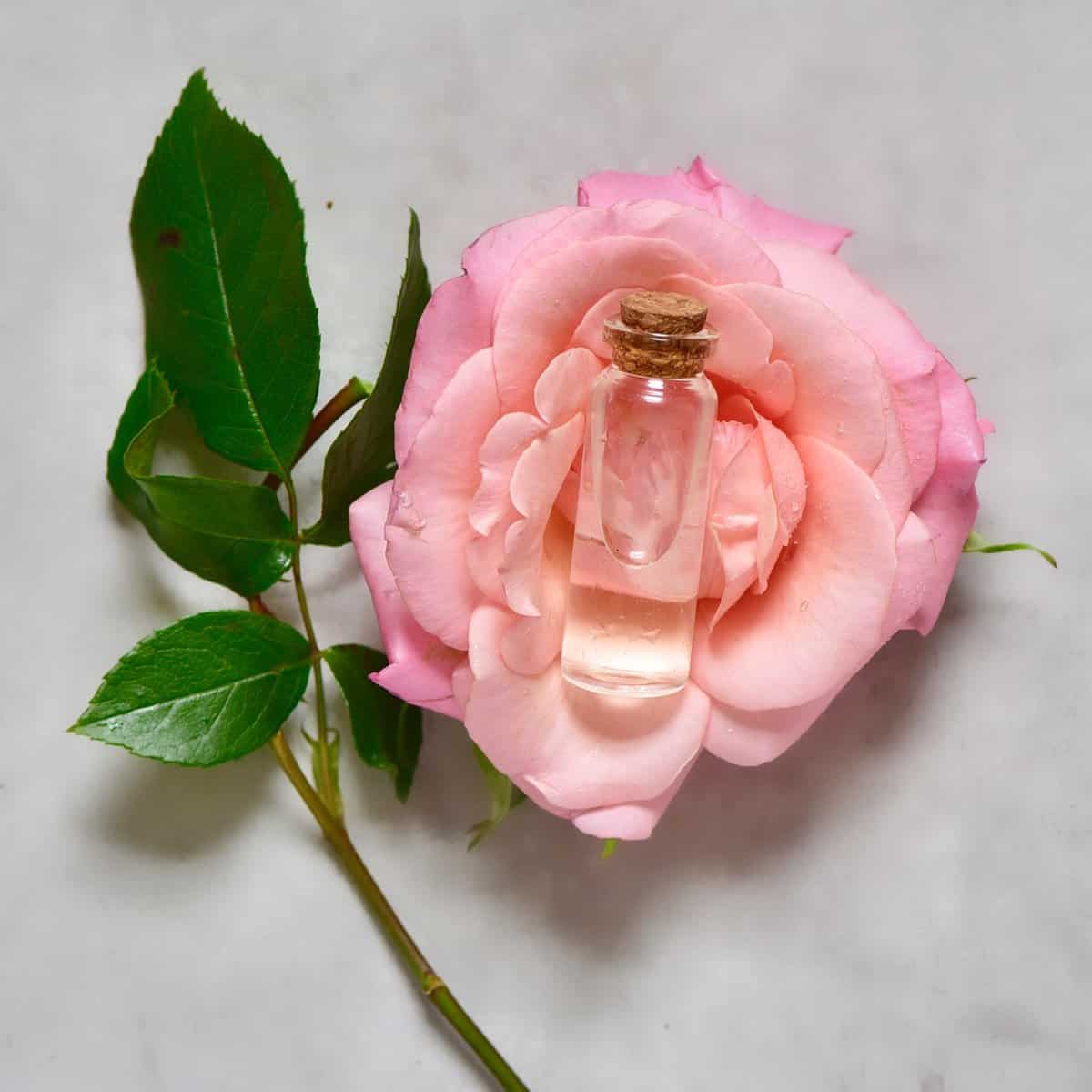
What you’d need
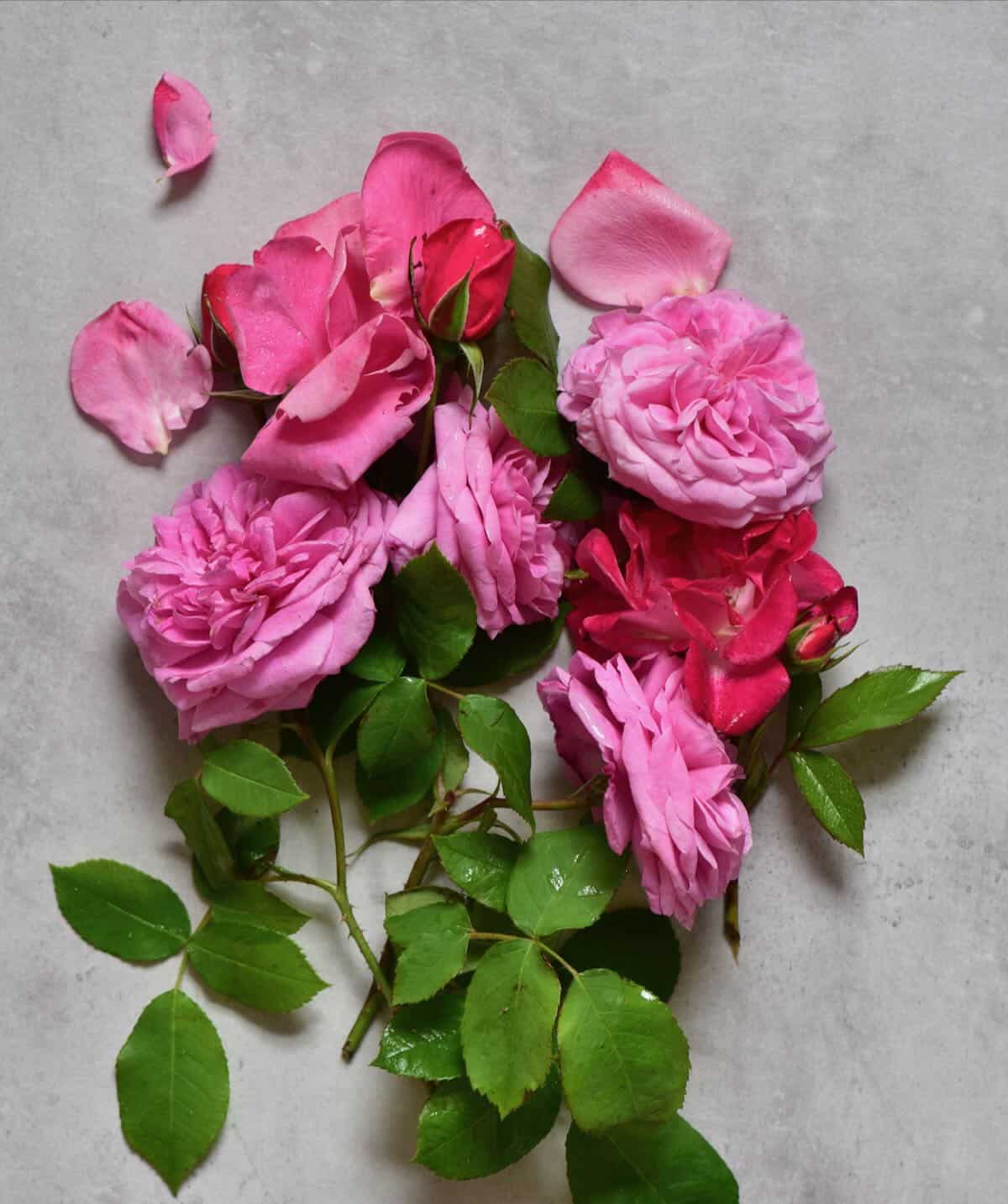
- Fragrant fresh roses: Rosa damascene (damask rose) and Rosa centifolia (centifolia/”cabbage” rose) are great choices but others will work too as long as they are aromatic roses, free of pesticides. Those from the flower shop are often sprayed with pesticides so you shouldn’t use them. Instead opt for unsprayed organic roses, foraged ones, or those from your garden (as long as you know if they are sprayed or not). You need 4-5 blossoms.
- Water: Tap water is fine as we’ll be boiling it. You can also use distilled water.
- Ice cubes: To help with the distillation process.
How to make rose water
Prepare the roses: If you are using roses from your garden, it’s best to pick them first thing in the morning – they will be freshest and most aromatic then. Remove the rose blossoms from the stems, separate the fresh petals, and carefully rinse them to get rid of any dust or little critters.
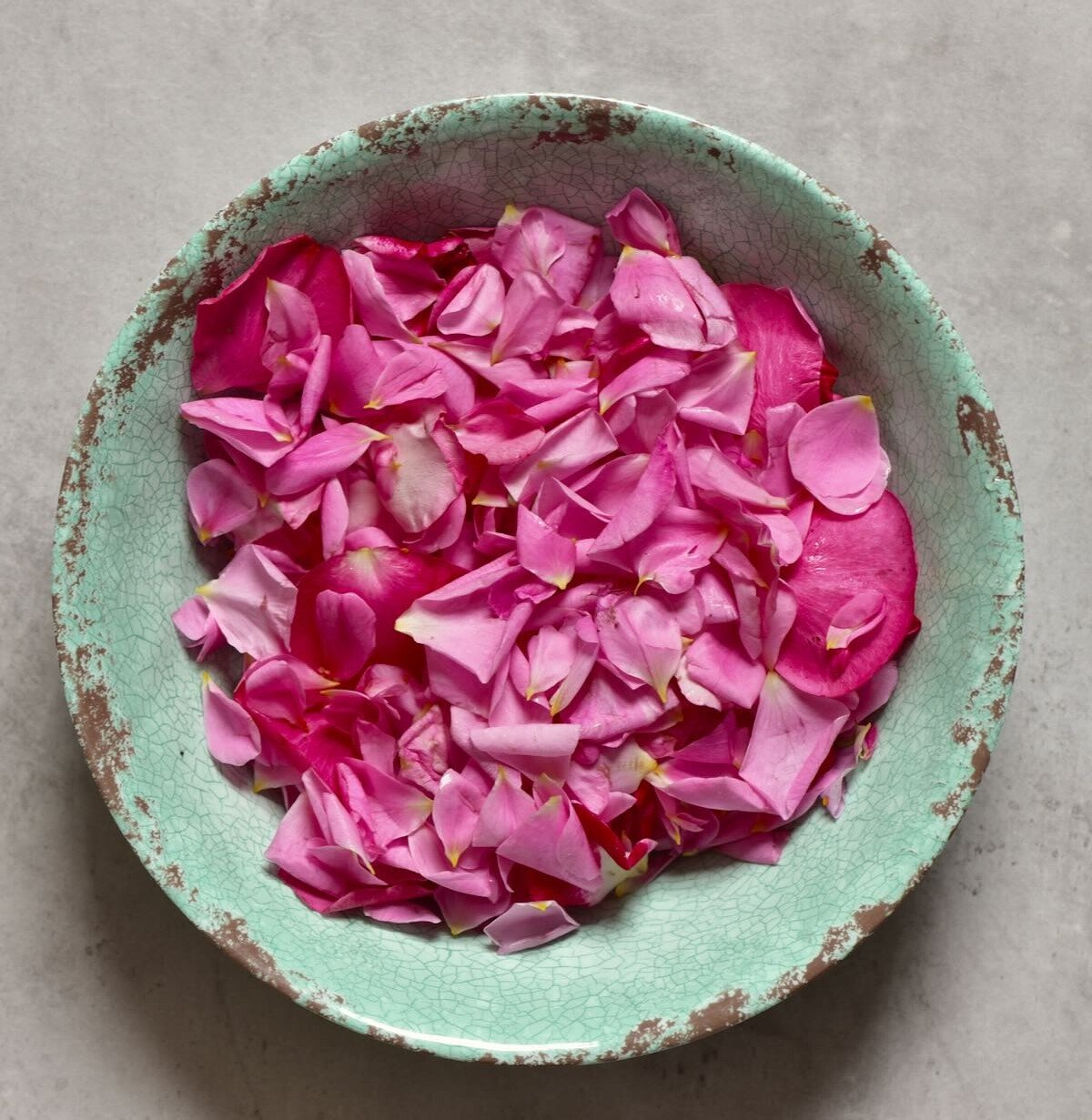
Heat the water and petals: Put a heatproof bowl at the center of an empty pot – this is where the distilled water will collect. Then add the rose petals around the bowl (not inside it). Add enough water to cover the petals. Bring to a gentle boil over medium heat, then let it simmer.
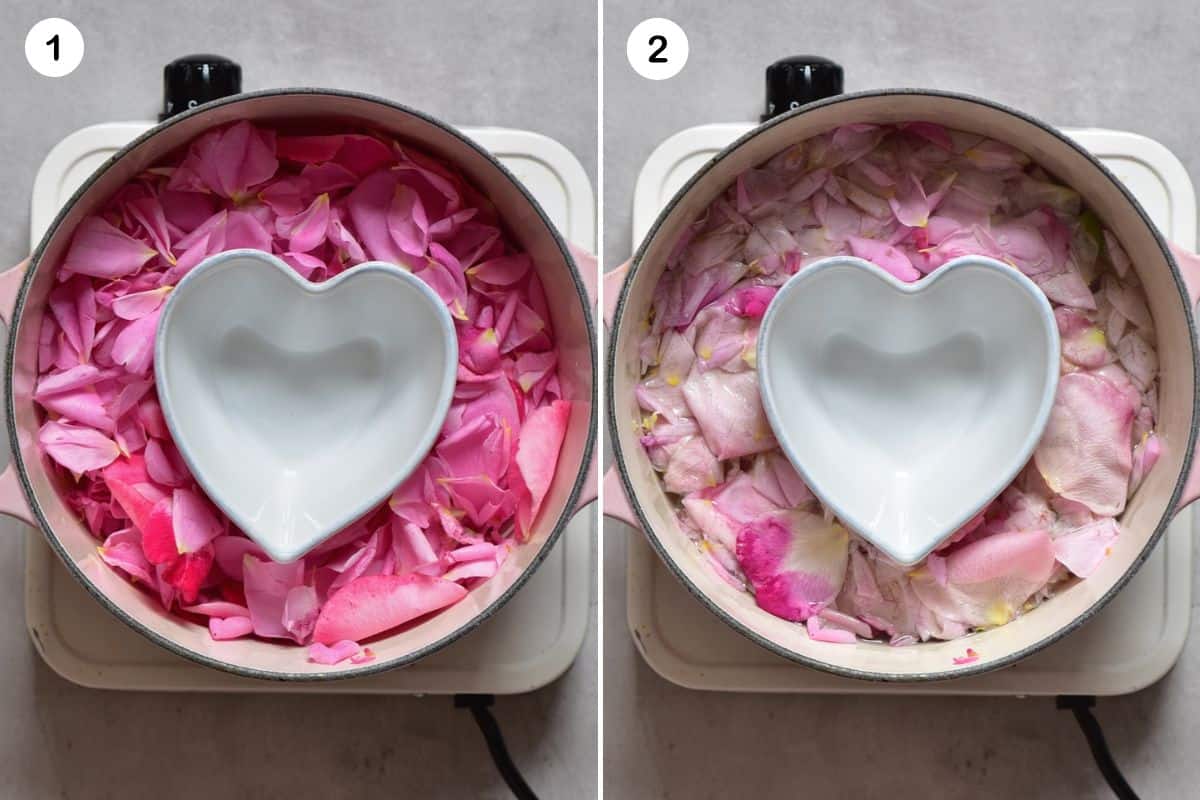
As soon as it boils, place the lid on upside down so the handle is facing into the pot. The inverted lid will help catch the vapor for this distilling method so the water can roll down and drip into the bowl.
Ice the lid to distill the water: Next, add some ice to the top of the lid. As soon as it melts, add more ice cubes. This helps with the condensation of the evaporated water under the lid. You can spoon off the melted ice or use a towel to soak it up. Keep repeating this step for about 20-30 minutes.
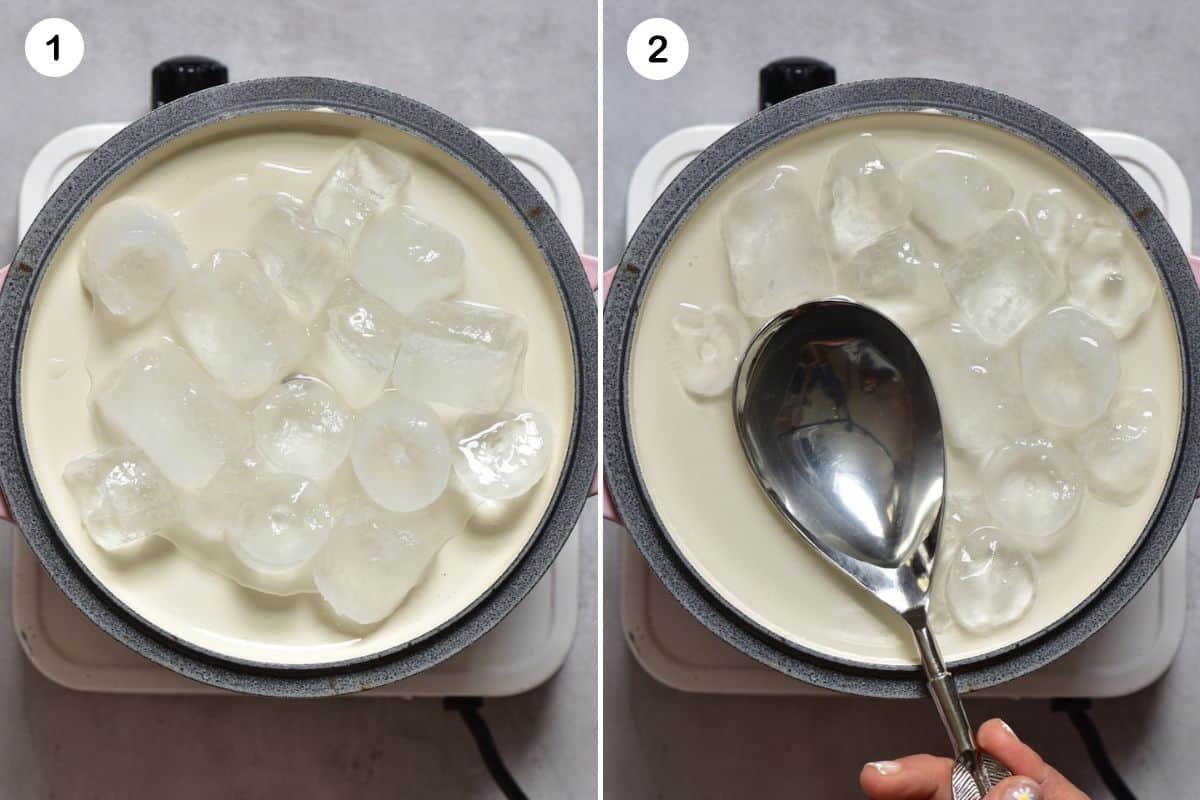
Cool the rose water: In about 30 minutes, the distilled rose water will be ready. It should have condensed into the bowl in the middle of the saucepan and should be completely clear.
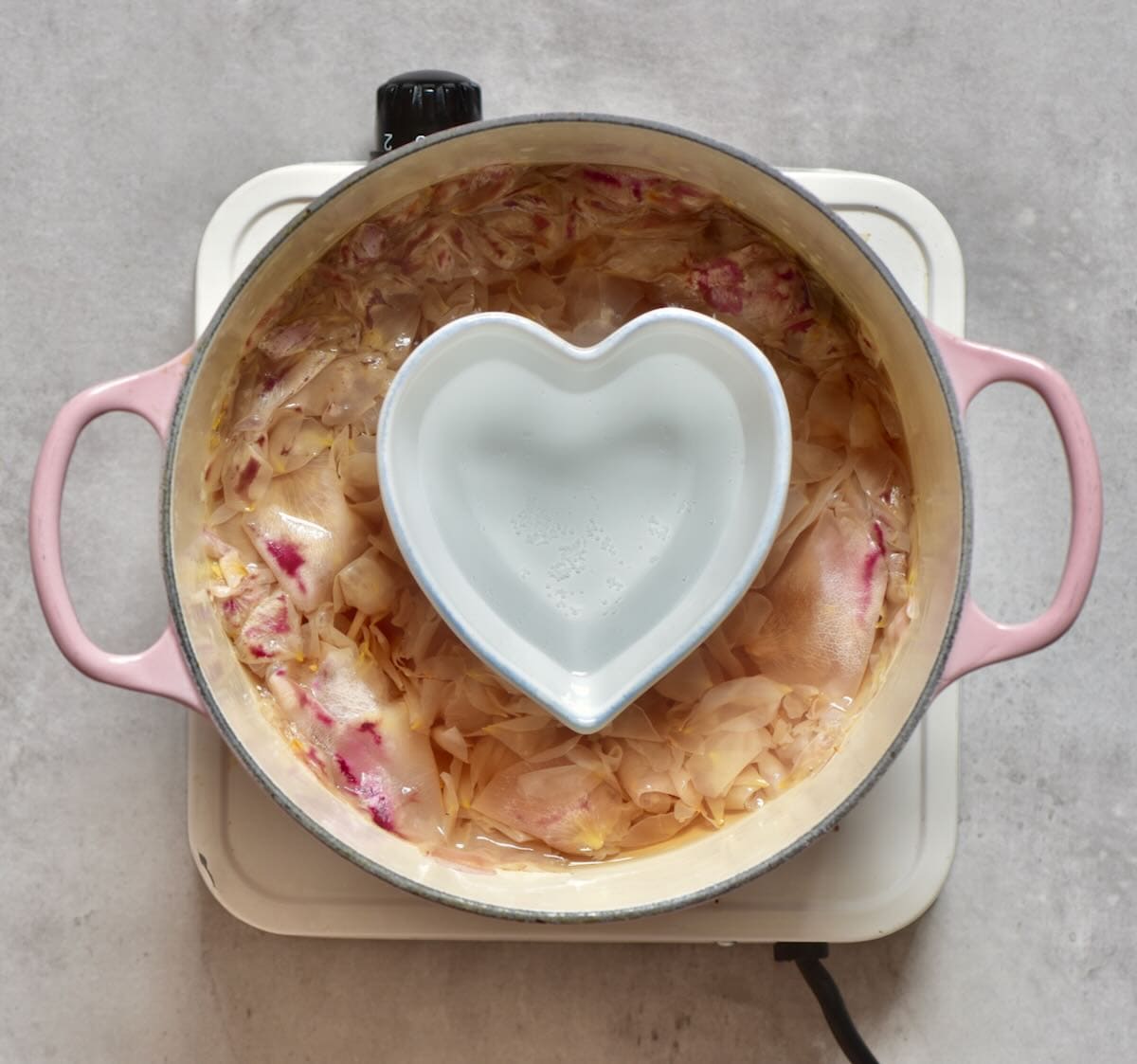
Finally, carefully remove the bowl as it is hot. Set it aside to cool down, then pour the rose water into a clean glass container.
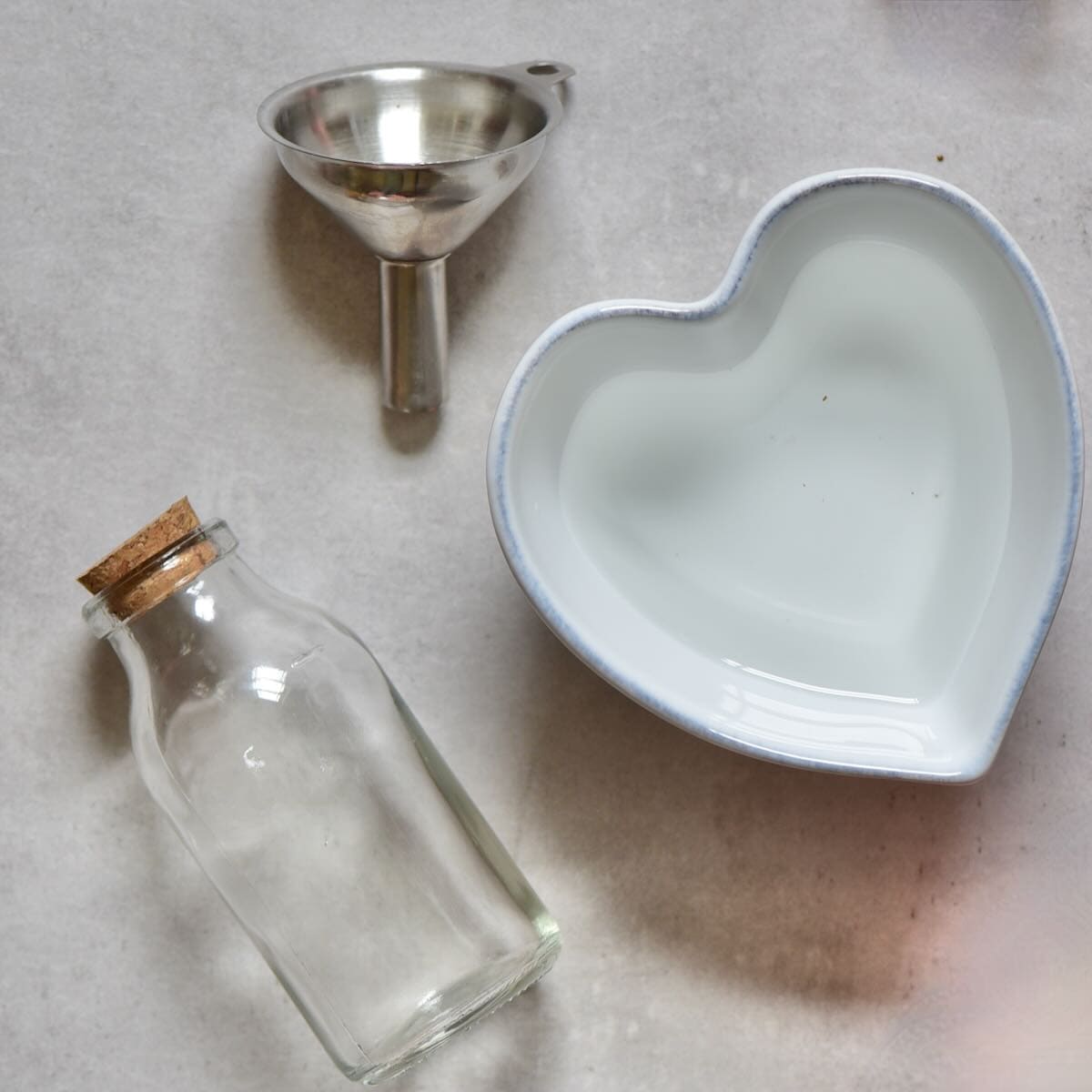
Video tutorial
Storage
Store the rose water in a glass container or a spray bottle in a cool dry place. Make sure to keep it out of direct sunlight and heat. When stored properly, it can last for months, if not even years.
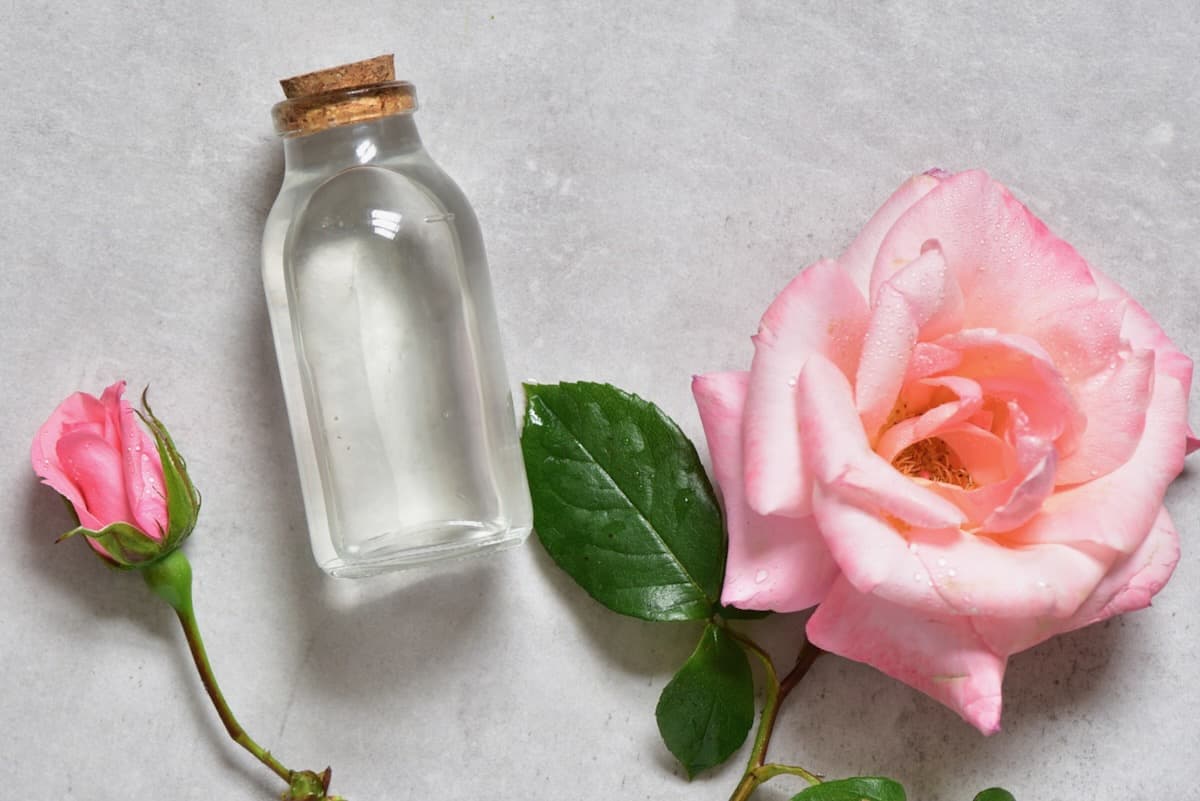
How to use rose water
Because this is pure distilled rose water, you can use it both for cooking and for beauty.
- Aromatic mist: It’s great to be used as a room spray! You can even spray it onto your pillow at night to help you sleep better or added to your bathtub for an aromatic bathing experience.
- Add to drinks: Add a few drops for a delicate floral flavor in cocktails or summer drink recipes like this Fresh Raspberry Lemonade.
- Use in desserts: A lot of traditional Middle Eastern desserts use rosewater, like this baklava recipe, bread pudding, or ashta cream. You can also add a drizzle to ice cream, tarts, and more.
- Skincare: Rosewater hydrates and refreshes the skin so you can use it as a natural facial toner, add it to a body lotion/moisturizer, or use it as hair perfume.
More rose recipes and DIYs
If you try this rose water recipe, let me know how it goes in the comments below. I’d appreciate a recipe card rating and would love to see your recipe recreations – tag me on Instagram @Alphafoodie!
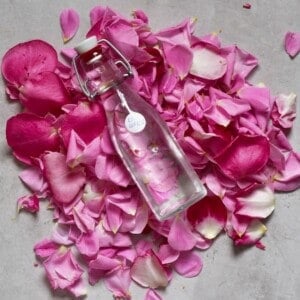
How to Make Rose Water
Ingredients
- 4-5 blossoms of fragrant organic roses make sure they are pesticide-free
- 3-4 cups water enough to cover the petals in your pot
- 3-4 cups ice cubes
This will yield about 1/2 cup (125 ml).
Instructions
- Remove the rose blossoms from the stems, separate the fresh petals, and carefully rinse them to get rid of any dust or little critters.
- Put a heatproof bowl at the center of an empty pot. Add the rose petals around the bowl (not inside it).
- Add enough water to cover the petals. Bring to a gentle boil over medium heat, then let it simmer.
- As soon as it boils, place the lid on upside down so the handle is facing into the pot.
- Add some ice to the top of the lid. As soon as it melts, add more ice cubes. You can spoon off the melted ice or use a towel to soak it up. Keep repeating this step for about 20-30 minutes.
- In about 30 minutes, the distilled rose water will be ready. It should have condensed into the bowl in the middle of the saucepan and should be completely clear.
- Carefully remove the bowl as it is hot. Let it cool down.
- Pour the rose water into a clean glass container and store it in a cool dry place.
Video
Notes
Nutrition
Nutrition information is automatically calculated, so should only be used as an approximation.

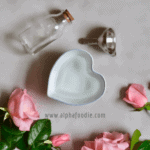
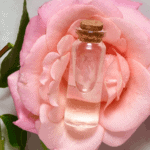
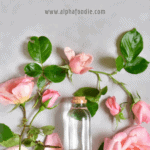

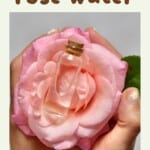
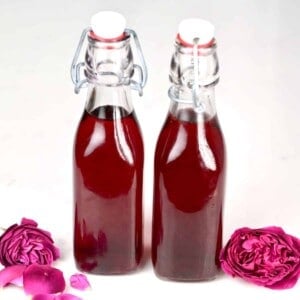
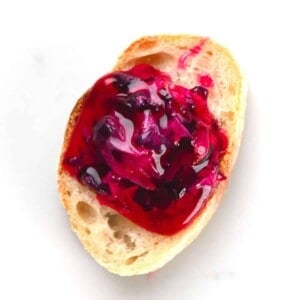
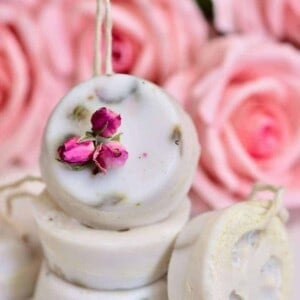









I tried your method for making rosewater and it looks nice clear as water but when i smell it the smell is not good it is little weird, i mean there is no fragrance in my roaewater.. is it normal??
Hi Simran,
Were the roses used fragrant? If not, then the rosewater won’t have a pronounced aroma either. The more fragrant the roses, the more fragrant your rose water will be. Rosa damascene (damask rose) and Rosa centifolia (centifolia/”cabbage” rose) are great choices but others would work just as well. I hope this helps.
Hello alpha foodie;
Why can’t we use the rosewater that has the petals inside is it harmful even after removing the petals?
Thank you !
Hi Liz,
Rosewater that is used for cooking or for cosmetics is made by distillation (the process of evaporating the water & then condensing it back to liquid). The distilled rosewater has had all of its impurities removed so it’s safe to consume.
The water in which the petals sit has simply been heated up and thus it’s not as clean. While it smells nice and you can put in a spray bottle to freshen the air in your room, I wouldn’t recommend using it for cooking or for cosmetic purposes. I hope this helps.
If i can’t find organic roses, can i use Flower shop roses and clean them out with cool water to remove any chance of chemicals? Would that suffice?
Thank you for your comment.
Yes, it will be great to clean them carefully with water. However, I would still highly recommend using organic roses (maybe some shops can supply with such) if you want to use them for baking or for cosmetic purposes. As a room mist, any fragrant roses would do. I hope this helps.
Hi ! Is it distilled water or normal water will be fine ?
Hi Soledad,
It is safe to use normal water (filtered or water that you would drink).
Why wouldn’t you use the water the roses are sitting in. Every single video I’ve watched strains the roses and uses that water??????
Hi Kay,
Rosewater that is used for cooking or for cosmetics is made by distillation (the process of evaporating the water & then condensing it back to liquid). The distilled rosewater has had all of its impurities removed so it’s safe to consume.
The water in which the petals sit has simply been heated up and thus it’s not as clean. While it smells nice and you can put it in a spray bottle to freshen the air in your room, I wouldn’t recommend using it for cooking or for cosmetic purposes. I hope this helps.
Hi! I am wondering for the purpose of looks, would I be able to add this to a dropper with dried roses in it?
Hi Majerle,
I would advise against this – the dried roses would introduce impurities to the pure distilled rose water and then it won’t be good for baking or for cosmetics.
The water, in which the petals sit during the process, smells nice and you can put it in a spray bottle to use as air/room freshener – for the purpose of looks, you could add dried roses in it. But please note that this water is not the pure distilled rose water used for cooking. I hope this helps.
Tried botj the ways and got the rose water out but zero fragrance and I can’t understand why. Used a wild rose commonly available here but is organic and is fragrant. In fact did not let them lie around either.. Plucked them from the bush, cleaned and straight for cooking. Absolutely clear.. No hue But no smell at all. Don’t know what’s going wrong….i did use petals which were past blooming.. Were starting to wilt but still on the bush.. Could that be it.. Or maybe the water temp was too high?
Hi there,
If the petals were starting to wilt I feel maybe they were not very fragrant either. I recommend using flowers in full bloom that are not spent/wilting.
Could you keep the water the petals are simmering in by putting them in a cheese cloth and straining the water? Or only the water in the center bowl is good to keep?
Hi Amanda,
Only the water in the center bowl is good to keep. The idea is that we keep the vapor which evaporates and then condenses into liquid – that’s the rose water which is safe to use for baking/consuming or using for homemade beauty products like face toners etc.
If you don’t want to get rid of the water with the petals right away, as it still smells nice, I guess you could just leave it on the stovetop or transfer to another container (with or without the petals) and keep it around for a day or two to enjoy the aroma.
I hope you enjoy the rose water.
Hi, what is the shelf life of this rose water? Do we need to add any preservatives?
Thank you
Hi Maria,
You can store the rose water in the fridge for about 3-4 months without the need of adding preservatives.
From another recipe I simmered the petals in distilled water. I had about 30 roses. The water is very very dark red. I then put that in glass jars in the frig and threw away the petals. I’m now trying your recipe with about 25 roses. How do I use the rose water to lighten brown spots and soothe rosacea and exema. Wrong spelling.
Hi Betsy,
Thank you for your comment. I know that rose water has anti-inflammatory properties and can thus help reduce skin redness. However, as I am not a doctor/dermatologist, I would suggest talking to a medical professional to discuss your personal needs. 🙂
Can you use a pyrex for this? I know hot pyrex put into cool makes it break but if its a consistent adding of ice?? Or can i use one of the regular glass sauce pan lids with the plastic or metal handles??
Hi,
You should be able to use a regular glass saucepan lid, especially if it has a handle right in the middle. When placed upside down, that will help the condensation (rose water) drip straight into the bowl placed in the center of the saucepan. I hope this helps.
Hello,
I’d like to ask if this method would work with dried rose flowers? Many thanks
Hi, Yes it is possible. However, the method is slightly different. I haven’t actually given that method a try yet. However, as far as I know, you need to add water to the dried rose petals and then heat that mix. I’ll try and give that DIY a go and find the best method.